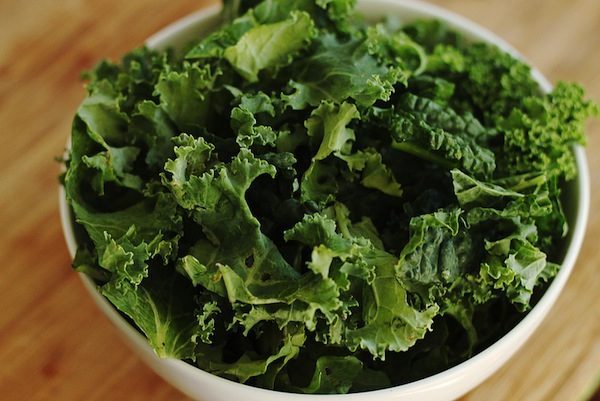
Kale and collards are dark, leafy cooking green vegetable. Kale has been cultivated in Europe for thousands of years, while collards are a staple food in southern cooking. Both have dark green leaves with thick stems. These superfoods belong to the same group as common cabbages but they don’t have that typical “head” formed by young leaves wrapped around themselves.
To avoid confusion, collards leaves are flat and can be large, whereas kale leaves are ruffled and sometimes quite narrow. These vegetables are available year-round, but their best season goes from midwinter through beginning of spring.
How to buy and store kale and collard greens
Look for firm, dark leaves specimens. Avoid yellowish or wilting leaves. Young leaves with thinner stems are easier to clean and cook. They also offer a better texture when cooked. Store them wrapped loosely in plastic or paper bag in the bottom of the refrigerator for a few days. You should use them before they turn yellow.
How to prepare them
Kale is great when sauteed or raw in a good salad. Vinaigrette helps to tenderize the leaves so kale is really in salad. If the stems are too thick, cut and remove the leaves, slice the stems, then cook them few minutes before adding the leaves. To cut the leaves easily, it’s better to roll them up, then cut across the roll with a chef’s knife. The strips will be more regular this way.
Best cooking methods
Both kale and collard greens can be enjoyed raw or cooked. You can consider them as a nice addition to soups or stews. They are harder than salad green so they are very versatile. You can boil, steam, stir- fry, and braise them. You can substitue other vegetables like cabbage, chard, or green beet.
How to know when they are done? If the stems are tender enough to pierce easily with a knife, it means it’s ready! You may remove the stems if they are very thick — or just cook them a little longer than the leaves, as I said above.
Photo by Stacy Spensley

